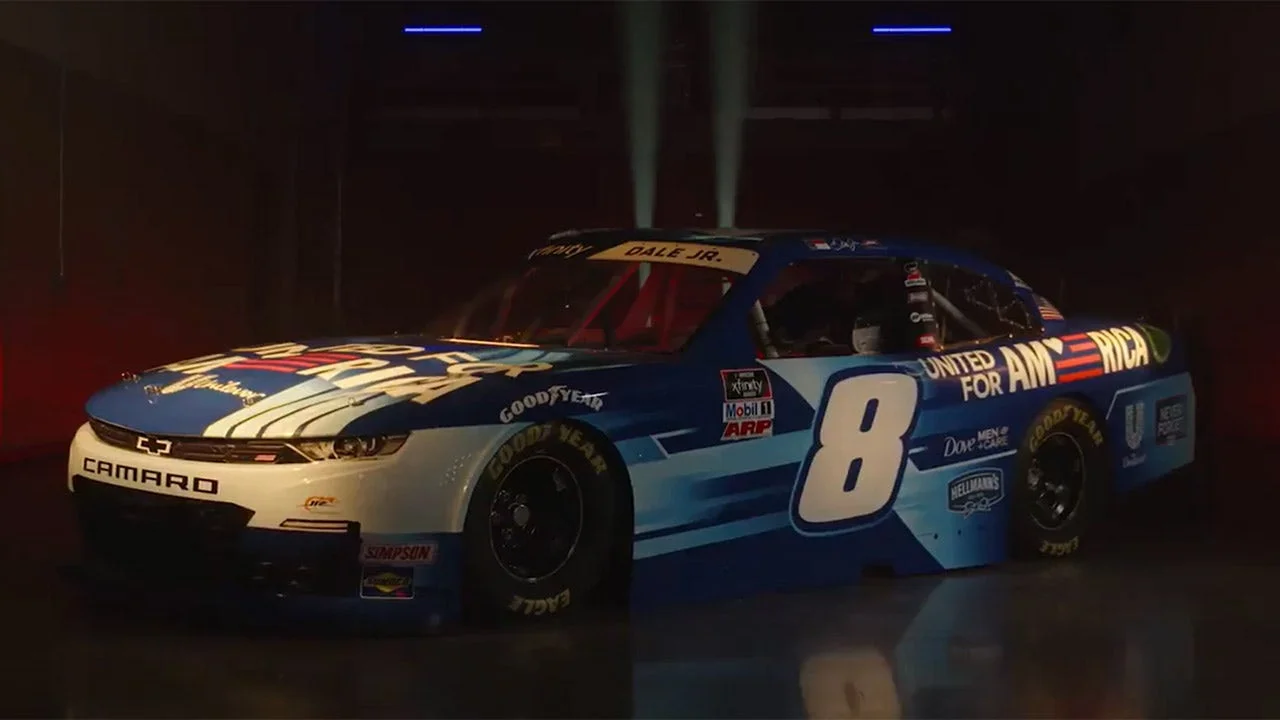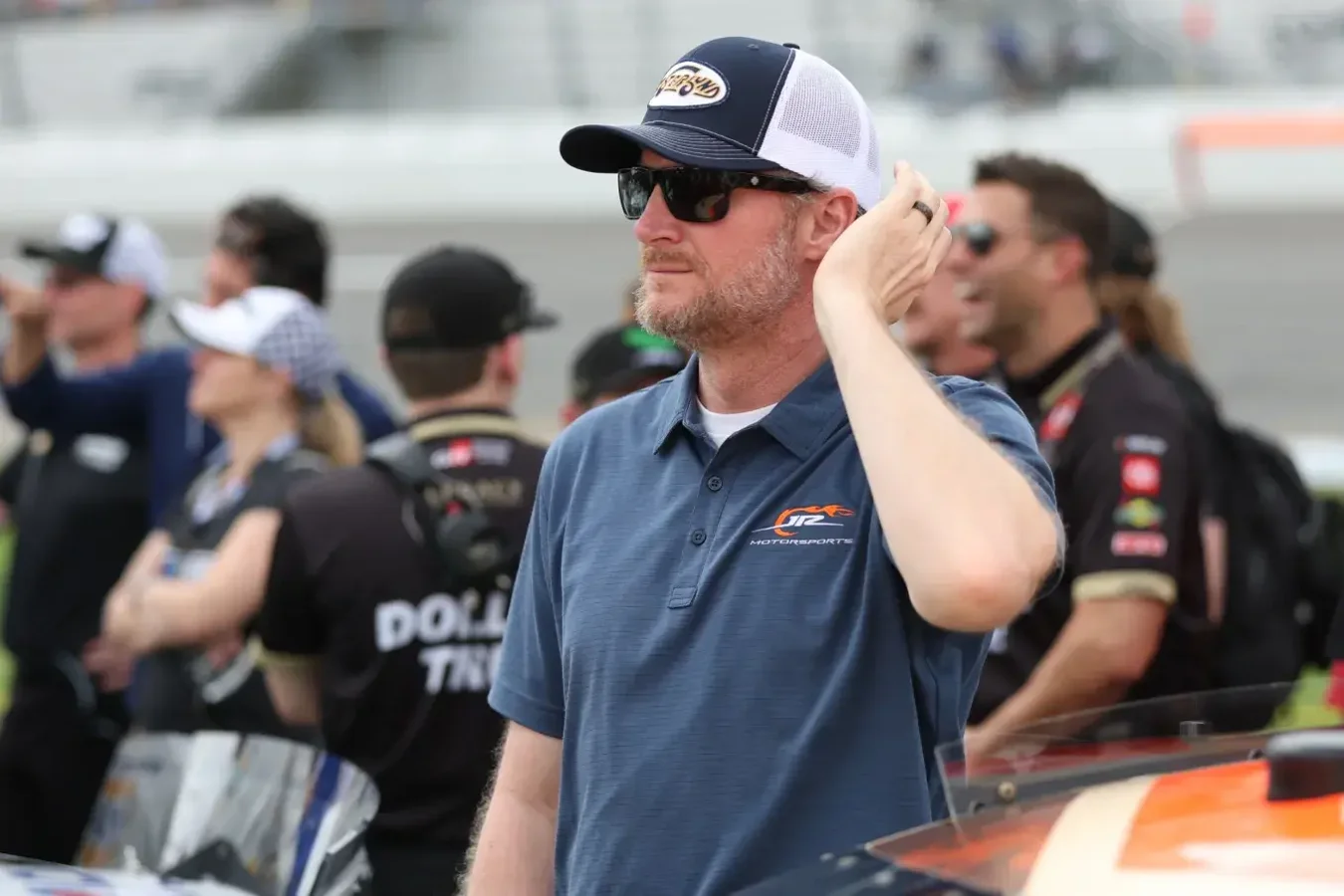Calls for reform in NASCAR Superspeedway racing have grown louder, with Dale Earnhardt Jr. pressing for specific updates to improve events at Daytona and Talladega. Raising the issue on his podcast, Earnhardt suggested that both NASCAR officials and fans must confront difficult truths about the current state of these races and consider innovative changes, placing his focus on the importance of “Dale Earnhardt Jr. Superspeedway Changes.”
Concerns Over Current Superspeedway Race Formats
Superspeedway events like those at Daytona and Talladega, once highlights of the NASCAR Cup Series season, are now criticized for prioritizing chance over skill. Dale Earnhardt Jr., a former Daytona 500 winner, has observed that with all cars so evenly matched, winning often comes down to surviving accidents and benefiting from luck, rather than showcasing a driver’s abilities. The packed drafting chains have increased the likelihood of major multi-car wrecks, which have become a troubling norm at these iconic races.
Earnhardt’s Proposal: Introducing a Fourth Stage
Seeking solutions to longstanding safety and entertainment concerns, Earnhardt Jr. offered his thoughts on a recent episode of the Dale Jr. Download podcast. On that platform, he discussed how the trend of “big ones”—massive late-race accidents—in NASCAR is linked to the current system, where drivers make risky moves in pursuit of points during stage racing. He suggested that altering the structure could address these problems and rejuvenate the Daytona experience.

Would this change bring some energy back to Daytona? ⚡🏁
🎙️ From The @DaleJr Download pic.twitter.com/e9eVIYrojt
— Dirty Mo Media (@DirtyMoMedia) September 18, 2025
Earnhardt Jr.’s idea focuses on adding a fourth stage to Superspeedway races, a feature already found in the Coca-Cola 600. He argued that this change would allow drivers more chances to score points, reducing the need for high-stakes, aggressive moves at the end of the race that frequently result in dangerous crashes. By spreading opportunities for points across four stages, Earnhardt believes the overall competition would improve and the number of calamitous wrecks would decline as the racing becomes less compressed and frantic.
Reactions and Rationale Behind the Recommendation
While Earnhardt Jr.’s suggestion has met mixed responses, including some resistance from fans, he remains convinced it could address key competitive and safety issues. Speaking directly to concerns about the quality of racing and strategies around fuel mileage, he pointed out the unique characteristics of the Coca-Cola 600 and likened them to what could be implemented at Daytona and Talladega.
Fans did not like this idea. I spoke of this myself on this show. We were talking about how at the last restricted plate race, we had this first stage where everybody raced like hell. And it’s like, well, if we want to try to get that style of racing the entire time, maybe we take fuel (mileage) out of it all entirely, or as much as you can, and add a fourth stage.
Drawing from recent race observations, Earnhardt noted that aggressive racing tends to cluster at specific points in the event, often because the format pressures drivers to make bold moves for stage points in dangerous scenarios. He argued that by distributing these points over an additional segment, drivers would have less incentive to take such risks all at once, potentially making the outcome less dependent on luck and reducing the risk of massive accidents.
The Potential Impact of Structural Changes
Earnhardt’s push for a structural revamp at Superspeedway events has triggered a wide-ranging discussion among drivers, fans, and race officials. As NASCAR grapples with criticism surrounding the Next Gen car and competition formats, the Daytona and Talladega races highlight the broader debate over preserving excitement while ensuring safety. Proponents of the fourth-stage addition believe it could inject new energy into Crown Jewel events, providing more strategic depth and fewer high-speed wrecks, while those opposed worry it could change the character of traditional races.
As the conversation continues—driven by notable figures like Chase Elliott, discussions among drivers, and ongoing feedback from the NASCAR community—the sport finds itself at a pivotal moment. Whether NASCAR embraces Dale Earnhardt Jr. Superspeedway Changes or takes a different approach, the future of Superspeedway racing remains a significant and evolving issue for everyone invested in the sport.
Would this change bring some energy back to Daytona? ⚡🏁
🎙️ From The @DaleJr Download pic.twitter.com/e9eVIYrojt
— Dirty Mo Media (@DirtyMoMedia) September 18, 2025

